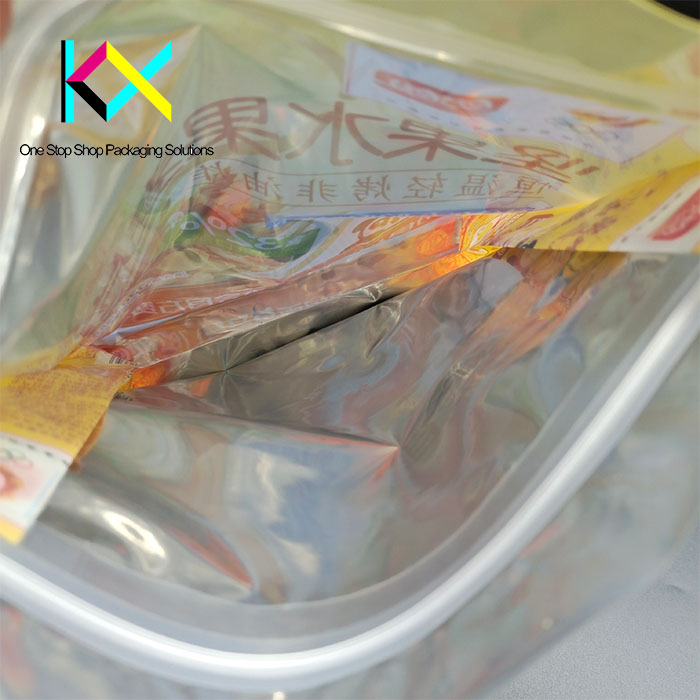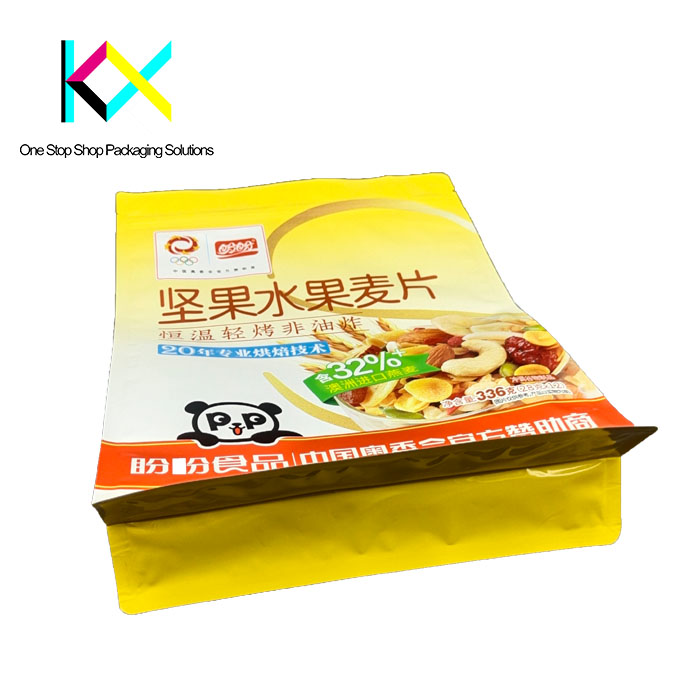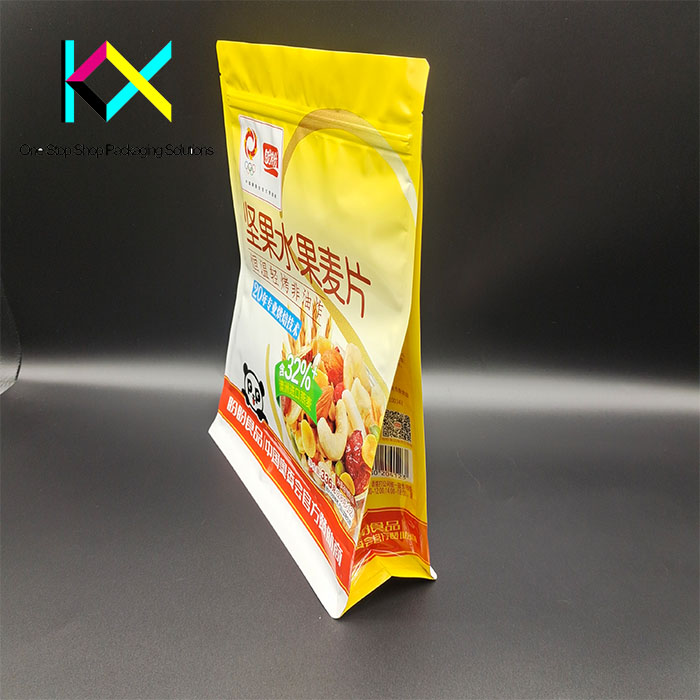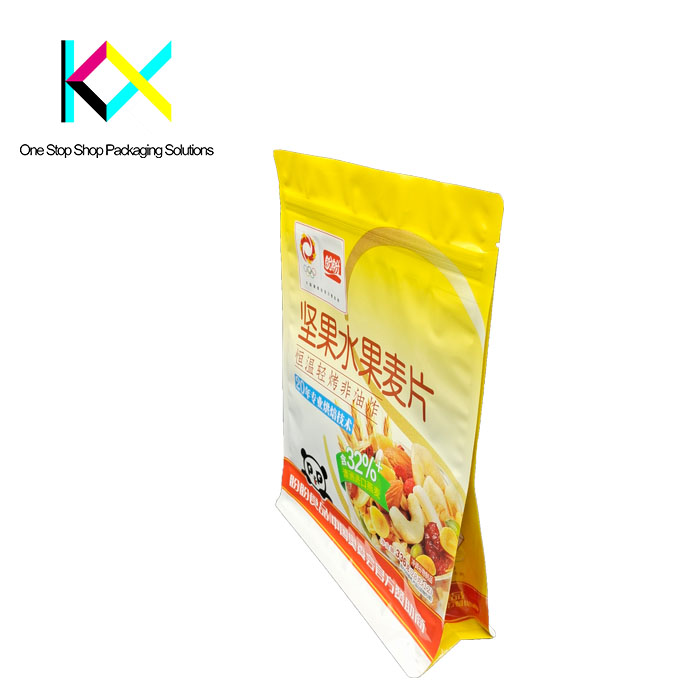The global coffee packaging industry, valued at $3.7 billion in 2024, is undergoing a seismic shift toward sustainability, smart technology, and consumer-centric design. From aluminium zip lock pouch solutions preserving artisanal freshness to flat bottom coffee pouch designs revolutionizing e-commerce logistics, brands are leveraging cutting-edge innovations to meet regulatory demands and eco-conscious consumer expectations. This article explores how recyclable coffee bags with valve, granola packaging bags, and other key formats are redefining the future of flexible packaging.

1. Aluminium Zip Lock Pouch: Balancing Luxury and Recyclability
The aluminium zip lock pouch remains a staple for premium coffee brands due to its superior barrier properties. However, sustainability pressures are driving critical upgrades:
Recyclable Metallization: Silicon oxide coatings replacing traditional aluminum layers
Plant-Based Zippers: Compostable closures made from cornstarch or PHA
Smart Seals: NFC-enabled zippers linking to brewing tutorials or carbon offset programs
Brands like Blue Bottle Coffee now use aluminium zip lock pouch designs with 70% recycled aluminum content, reducing virgin material use while maintaining 18-month freshness. EU’s Packaging and Packaging Waste Regulation (PPWR) is accelerating this shift, mandating 65% recycled content in all packaging by 2025.

2. Recyclable Coffee Bags with Valve: Freshness Meets Circularity
The recyclable coffee bags with valve have become a sustainability benchmark, addressing two critical needs:
✅ Freshness Preservation: Micro-valves adjusting CO2 release based on altitude and roast date
✅ End-of-Life Responsibility: Mono-material PE or PP structures accepted in curbside recycling
Innovations include:
🔸 Edible Valves: 3D-printed from coffee bean extract, dissolving during brewing
🔸 Blockchain Tracking: QR codes verifying recycling compliance and bean origin
🔸 Phase-Change Liners: Regulating internal humidity during shipping
Lavazza’s recyclable coffee bags with valve reduced landfill waste by 40% in 2023, while Intelligentia’s IoT-enabled valves sync with smart grinders for precision brewing.

3. Granola Packaging Bags: Lessons for Coffee
The granola packaging bags sector offers cross-industry insights:
Re-Sealable Tech: Press-to-close zippers adapted for coffee’s freshness needs
Anti-Static Films: Preventing clumping in both granola and ground coffee
Transparent Windows: Hybrid designs showing product quality while blocking UV light
Nature’s Path redesigned its granola packaging bags with compostable PLA windows, inspiring coffee brands like Grounds for Change to adopt similar clear-view innovations in coffee packaging pouches.

4. Flat Bottom Coffee Pouch: E-Commerce’s Structural Hero
The flat bottom coffee pouch is reshaping DTC logistics with:
📦 Space Optimization: Collapses to 30% volume when empty
🛡️ Drop Resistance: Graphene-reinforced corners surviving 20ft tumbles
🌿 Mono-Material Design: 100% recyclable PE structures
Revolution Roasters cut shipping damages by 35% using flat bottom coffee pouch designs with integrated air cushioning. The flat base also enhances shelf presence, providing 40% more branding space versus traditional stand-up pouches.

5. Coffee Packaging Pouches: The Smart Upgrade
Modern coffee packaging pouches are evolving into interactive platforms:
AR Labels: Scanning triggers 3D farm tours or barista masterclasses
Thermochromic Inks: Revealing tasting notes at optimal brewing temperatures
Self-Healing Films: Nano-coatings repairing microtears during transit
Stumptown’s AR-enabled coffee packaging pouches drove a 200% increase in social engagement, while Partners Coffee’s heat-sensitive bags reduced customer complaints about stale beans by 55%.
6. Sustainability-Driven Material Science
Breakthroughs across all formats include:
Marine-Degradable Films: Breaking down in seawater within 18 months (used in granola packaging bags)
Mycelium Liners: Mushroom-based barriers in recyclable coffee bags with valve
Upcycled Coffee Husks: 30% of pouch material from processing waste
Pact Coffee’s coffee packaging pouches now feature ink made from recycled coffee grounds—turning waste into a branding asset.
7. Regulatory Pressures and Consumer Demands
Global policies are non-negotiable:
California’s SB54: Bans non-recyclable aluminium zip lock pouch designs by 2027
EU’s Digital Product Passport: Requires blockchain traceability for flat bottom coffee pouch
FDA’s SmartLabel™: Mandates instant access to freshness data via QR codes
Simultaneously, 73% of consumers demand compostable or recyclable options (NCA 2024), pushing brands to adopt recyclable coffee bags with valve and other eco-innovations.
8. The Future: Intelligent, Regenerative, and Hyper-Personalized
Tomorrow’s coffee packaging pouches may feature:
🌱 Self-Composting Timers: Activated by moisture sensors post-expiry
📡 Waste Tracking RFIDs: Monitoring recycling participation
🎨 AI-Generated Designs: Custom artwork based on customer preferences
Strategic Takeaways for Coffee Brands
1️⃣ Phase Out Multi-Layers: Transition to mono-material flat bottom coffee pouch designs
2️⃣ Pilot Compostable Tech: Test recyclable coffee bags with valve using mycelium liners
3️⃣ Leverage Cross-Industry Insights: Adapt granola packaging bags innovations like anti-static films
In 2024, coffee packaging is no longer just a container—it’s a brand’s sustainability pledge, a freshness guardian, and a direct line to consumer loyalty. From the rugged reliability of aluminium zip lock pouch designs to the smart circularity of recyclable coffee bags with valve, the industry is brewing a future where every pouch tells a story of innovation and responsibility.
You can visit our website to know more about our compostable pouch:
